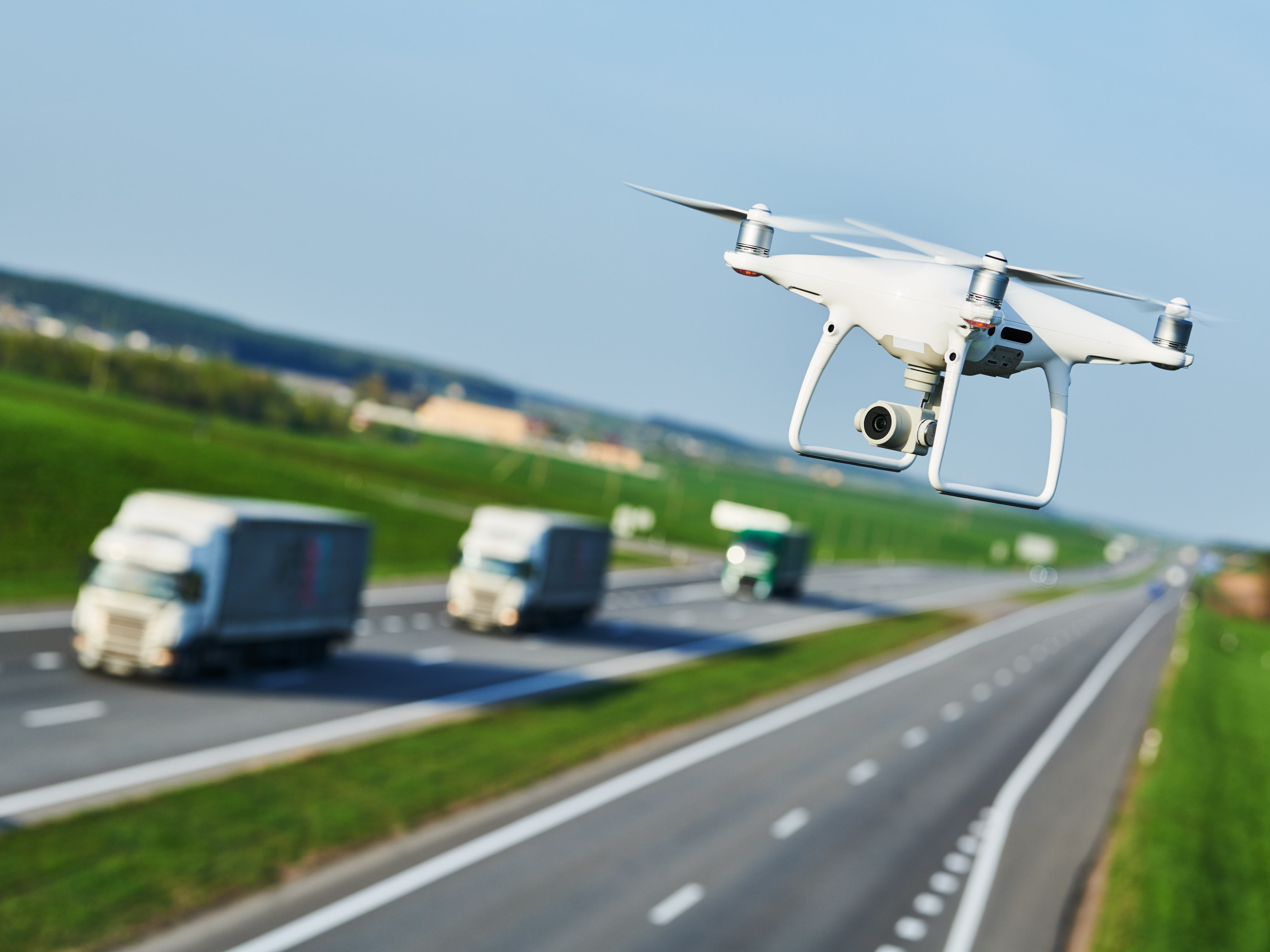27 July 2021
3 min read
#Transport, Shipping & Logistics
Published by:

So, you think that the Heavy Vehicle National Law only concerns trucks on roads? Think again, because the National Heavy Vehicle Regulator (NHVR) is taking to the skies!
The NHVR recently released an Australia-wide tender looking for a supplier who is able to provide ‘target or reconnaissance drones’ and other Automatic Number Plate Recognition (ANPR) camera technology.
So, what is the NHVR going to do?
The NHVR has long adopted a risk-based approach to compliance monitoring and enforcement activities. This means that the NHVR would like to focus its compliance monitoring and enforcement efforts on businesses within the road transport supply chain that have a poor track record of compliance and therefore pose the greatest risk to safety.
How do drones fit into this?
The NHVR plans to roll out a mini-army of ANPR-equipped monitoring devices. The initial trial will include two vehicle-mounted cameras, two trailer-mounted cameras and one drone-mounted camera, all equipped with ANPR.
Drones have been used in Australian road policing, but typically not with integrated ANPR capabilities.
What is the drone going to be looking for?
The automatically recognised number plate details will be used to flag any high-risk vehicles, operators or loads. Examples might be oversize or over-mass loads that are approaching bridges or dangerous goods carriers about to enter tunnels or vehicles or operators who have a demonstrated poor track record from prior roadside inspections. Or, as a spokesperson for the pilot project said:
“These cameras will assist NHVR’s officers in undertaking an intelligence-led and risk-based approach to safety by ensuring enforcement efforts target the greatest safety risks.”
What happens when the drone identifies a high-risk target?
The drone launches a remote-controlled air to surface missile, neutralising the target.
Sadly, for those of us that like action movies, the tender does not extend to the supply of military-grade weapons response. Instead, any such identified high-risk vehicles, operators or loads can then be targeted for inspection by on-road enforcement units. Not as dramatic, but still effective.
Where is the drone going to operate?
The initial trial will see the drone used in the NHVR’s Southern Operations region covering ACT, South Australia, Victoria and Tasmania.
What are the benefits to law-abiding citizens?
The pilot project is aimed at focusing compliance monitoring and enforcement activities where they are needed, not at increasing on-road interventions across the board.
So, if the project is a success and the ANPR cameras rolled out more widely, law-abiding citizens can expect to be the subject of less on-road interventions. Effectively, if they are screened and cleared as not being high-risk vehicles, operators or loads, they can expect to be given a ‘wave through’ more often. Or, as a spokesperson for the pilot project said:
“Smarter camera technology will also assist in identifying operators who are doing the right thing, who can then expect to be less regularly intercepted by the NHVR.”
How long will the pilot project go for?
The pilot project is expected to commence in mid-2021. Once commenced, the pilot is slated to run for three months.
What comes next?
After the initial trial period concludes, the NHVR will provide information on the outcomes to the public. We expect that the NHVR will also indicate its intention to continue with or scrap the project, depending on whether it has delivered real safety benefits.
Overall, the project's goal is to take as much of the guesswork or luck out of heavy vehicle safety monitoring and enforcement as possible. The Australian heavy vehicle fleet is massive and it must be a bit of a lucky dip to identify vehicles, operators and loads who pose a significant safety risk when relying on random on-road interventions. In the same way that businesses in the supply chain must adopt a risk-based approach to managing safety, it is good to see the NHVR continuing to implement a risk-based approach to monitoring and enforcement.
Author: Nathan Cecil
Disclaimer
The information in this publication is of a general nature and is not intended to address the circumstances of any particular individual or entity. Although we endeavour to provide accurate and timely information, we do not guarantee that the information in this article is accurate at the date it is received or that it will continue to be accurate in the future.
Published by: